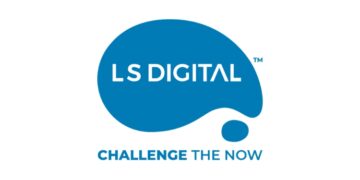For a moment, imagine yourself seated snugly in a soft chair, surrounded by a bustling crowd and the pleasant rustle of turning pages in the air. A profound yet delicate voice begins to build a tale, echoing stories that cross time, space, and boundaries. This is more than just a collection of words; it’s a synthesis of emotions, insights, and experiences. Each sentence is a thread in the intricate, bright, and alive tapestry of a brand that is not only seen, but also felt, heard, and experienced.
Brand storytelling is more than simply a marketing technique; it’s an effective approach to connect with and inspire your target audience throughout your publicity funnel. It can help you establish trust, loyalty, and emotional resonance with potential and existing customers. You may differentiate yourself from competitors and have a long-term impression by telling fascinating stories that highlight your brand’s beliefs, personality, and purpose.
A story isn’t complete until all the main elements are incorporated. Here are the essential points to consider to enhance your brand story for your business.
- Understand your audience and their demands. The first step in developing great brand stories is to understand who you’re talking to and what they care about. You must perform research and analysis to determine your target market, including demographics, psychographics, pain areas, and goals. You should also map out their customer journey and understand how consumers connect with your business at each level of the funnel. This will help you develop stories that resonate with individuals and address their wants and desires.
- Define your brand’s identity and voice. The next step is to define your brand identity and voice, which are the foundation of your brand storytelling. Your mission, vision, values, personality, and tone all contribute to your brand identity, which is what distinguishes you. Your brand voice expresses your identity to your audience and reflects your style, attitude, and language. You need to be consistent and honest in conveying your brand identity and voice across all your channels and platforms, and make sure they correspond with your audience’s expectations and preferences
- Create your brand story and narrative. The third phase is to develop your brand story and narrative, which represent the content and structure of your brand storytelling. Your brand story is the main theme or message that you want to express to your audience, and it should address the question of why your brand exists and what value it provides. Your brand narrative is the specific manner you express your brand’s story and should include the following elements: A protagonist (your client), a problem statement (their pain point), a solution (your product or service), a transformation (the benefit or outcome), and a call to action.
- Select your tale format and channel. The fourth step is to plan how and where you will distribute your brand story with your target audience. Consider the appropriate forms and channels for your brand’s story and narrative, your target audience’s tastes and behaviours, and your marketing goals and objectives. Some of the most frequent types and channels for brand storytelling include press releases, featured articles, authored articles or blog posts, social media posts, videos, podcasts, webinars, ebooks, infographics, case studies, testimonials, reviews, newsletters, emails, landing pages, advertisements, speaking sessions through university visits and video interviews on TV and more.
- Measure and optimise your brand’s storytelling. The final step is to track and assess the effectiveness of your brand storytelling. You must establish clear and attainable measurements and KPIs that reflect your marketing goals and objectives, such as awareness, engagement, conversion, retention, loyalty, advocacy, and income. You must also gather and evaluate data and feedback from your target audience and other sources, such as web analytics, social media analytics, email marketing analytics, customer surveys, and so on. Based on your findings, you should optimise and develop your brand storytelling to ensure it achieves the required effects and outcomes.
By following these steps, you may use the power of brand storytelling for long-term effect. Brand storytelling is a continuous process that requires imagination, strategy, and execution. It allows you to explain your brand’s value proposition, set yourself apart from your competition, and develop meaningful interactions with your target audience. Remember that customers buy stories and experiences, not items or services. So, start telling your brand narrative today and see how it may help your business and customers.
Authored article by Saloni Gandhi, CEO & Founder, The Pen Project.

















